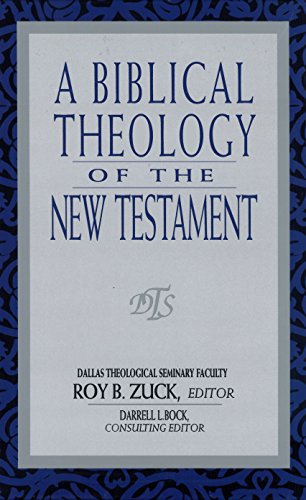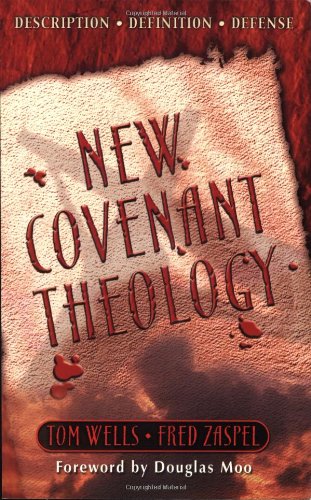Quotes about Theology-New_Covenant
The OT law is not to be abandoned. Indeed, it must continue to be taught (Matt 5:19) – but interpreted and applied in light of its fulfillment by Christ. In other words, it stands no longer as the ultimate standard of conduct for God’s people, but must always be viewed through the lenses of Jesus’ ministry and teaching.
We who belong to the catholic church do not reject the law of Moses, but we welcome it, provided it is Jesus who reads it to us, so that as He reads we may lay hold of His understanding and interpretation.
The Antinomian heresy is the view that the law of God revealed in the Old Testament has nothing to do with the New Testament church; that the New Testament church is a church without law, a church that lives and breathes exclusively on the basis of grace… But the New Testament is far from abolishing God’s moral law. Jesus calls His disciples to obedience. He says, “If you love me, you will obey what I command” (John 14:15).
The Purpose of God, An Exposition of Ephesians, Christian Focus Publications, 1994, p. 64-65.
Under the New Covenant, however, it undergoes a subtle variation in that Christ sets Himself forward as the comprehensive Lord, a position that we understand can only be accorded to God Himself. The justification for this remarkable claim by Christ is twofold: first, by very nature He was God and second, His person as the God-man was awarded the full title “Lord” (i.e. Yahweh) upon the completion of His mission in this world (Phil. 2:9-11). We should not be surprised, then, to hear Him say, “All authority in heaven and on earth has been given to Me” (Matt. 28:18).
In each case (in Matthew) there is no mere parallel being drawn: there is eschatological transcendence. That, Jesus, for example, is not merely another great Solomon: He is “greater than Solomon” (12:42). Likewise, He is “greater than the temple” (12:6), “greater than Jonah” (12:41). In the mist of all this, the clear implication is that He is also David’s greater son (12:3-4); in fact, this is precisely Jesus’ point in 22:45. Further, He is “Lord even of the Sabbath” (12:8). Similarly, Jesus is not merely a son of Abraham, privileged as that is. He is the son of Abraham par excellence, the one in whom the patriarchal promises reach their goal (1:1). He is not simply a representative of Israel – He is the true Israel (2:15, 16-18). His name is “Joshua,” but He is greater than His forebear and brings a greater deliverance: “for He shall save His people from their sins” (1:21). Moreover, it would have been very wrong to erect booths for Moses, Elijah, and Jesus: these two other men, great as they were, deserve no equal place with Jesus. “Hear Him” was the word from Heaven (17:5). He is greater than Elijah and greater than Moses – greater than the prophets and even the law itself.
In hermeneutical debate it is often asked whether it is right to assume that all of Moses’ law remains unless it is specifically abolished, or if it is right to assume that it is all abolished unless it is specifically stated to remain. In one sense the question is irrelevant, for it is the entire Old Covenant that is abolished (2 Cor. 3) and not just certain categories of the law. But in another sense the question is wrong, for Christ’s claim (Mt. 5:18-20) is that all of Moses is to be continually taught and observed-only, in the new form He gives it. It is all of the law that remains, but it is to be obeyed as interpreted by Christ.
The justification for works on the NCT (New Covenant Theology) seems to be at least fivefold. First, it has seemed to some of us that if the New Testament is the apex of God’s revelation, then we ought to read the earlier parts of Scripture in its light. The point seems self-evident, but for some of us it was nevertheless hard to arrive at. Second, the NT is very explicit in making believers “slaves” of Jesus Christ. The implications of this are far reaching; here we simply note the fact. Third, a nagging question arises when OT law becomes too prominent in discussions of Christian morals and ethics. The question is: Which is the higher revelation of the character of God, the Ten Commandments or the person, work and teaching of Jesus Christ?… A fourth thing calls for an understanding of NCT: the renewed emphasis in our day on exegetical and biblical theology as a source of systematic. This has inevitably called into question the way Christians read their creeds and confessions. Finally, in one of the odd providences that the Lord sometimes sends our way, those who defend New Covenant Theology find themselves falling in with an emphasis that has been prominent throughout church history.
[The early church] unanimously understood Jesus’ teaching as an addition to Moses’ law, an advance whose requirements were significantly higher. The common idea was that Christ’s teaching completed the law of Moses – it finished what was begun at Sinai. In this sense there is no destruction or even contradiction of Moses but a growth as from seed to tree.
Christ brought the “full” eschatological intent of the law to final realization. Moses survives, but only as he is taken up into Christ.
Jesus came to bring about what Moses’ law anticipated. The law pointed forward to Him all along; He is its eschatological goal. Only in Him does it find its full significance and continuing validity; apart from Jesus’ interpretation of it, it has precisely no enduring use. Just as Moses’ law advanced the law which God had “written on the heart” of man at creation, so also in Jesus’ teaching that advance is brought to full completion. In Jesus, Moses is “fulfilled.”
What Jesus has to say has an eschatological significance to it. He has not merely reissued Moses. Nor has He abrogated Moses. Nor has He merely replaced, intensified, or expanded him. Jesus “fulfilled” Moses.
Reformed interpreters generally must speak (in so many words) of the fulfillment of the ceremonial law, the cancellation/abrogation of the civil law, and the continuance of the moral law. But all this is confusing and completely unnecessary if the whole of the law may be viewed as taken up into Christ and given His new and authoritative interpretation. With this, then, “every detail” of the law (of Moses!) may be observed by the New Covenant believer in precisely the same way: namely, in the way it comes to him from the hands of Christ.
In Christ, Moses reaches maturity and emerges in full bloom. Moses’ law still has relevance, but only as it comes to us from the hands of the Lord Jesus. Christians today must still read Moses, and for great profit, but when they read him they must be careful to wear their Christian lenses. Moses’ law is not simply incorporated into the New Covenant as it was revealed through Moses – it is fulfilled, advanced, and brought to completion.






